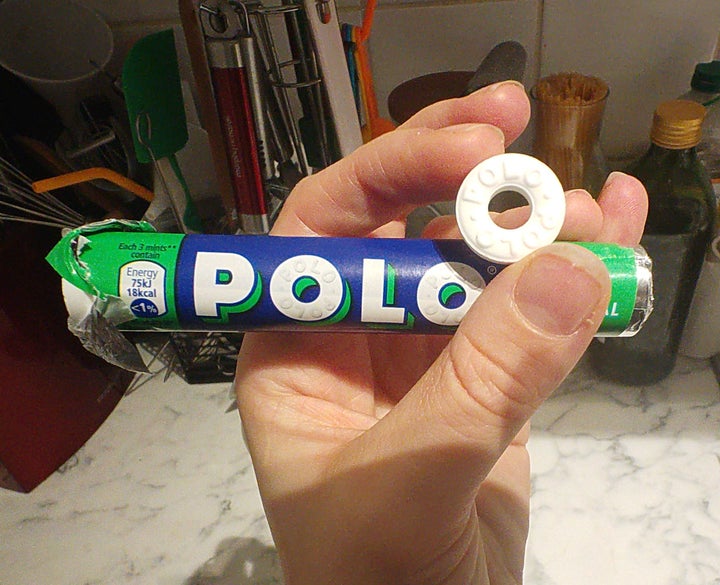
You might already know the meaning behind the patterns on Custard Creams or the hearts on Jammie Dodgers.
But we reckon most people are stumped about what happens to the middle bit of Polo mints.
The food’s official site says that “Nestlé’s Consumer Services team receives hundreds of calls a year about Polo.”
Callers’ favourite question is apparently “what the factory does with the middle of the Polos.”
It’s a good query ― especially if (like us) you didn’t learn about donut holes until way too late and wish you’d discovered the “waste” food earlier.
After all, Flakes were invented when a factory worker noticed thin sheets of chocolate flowing out of their moulds and hardening in brittle layers ― is there a secret world of minty pips we’re missing out on?
What really happens to the middle of a Polo
Nestlé’s site delivered the bad news: “The answer is that there never is a middle, each Polo is made with a hole in it.”
A video of a machine that makes mints with holes in them suggests that the products are pressed into moulds rather than formed into flat discs, which the centre is then stamped out of.
Invented by George Harris, the mighty mind behind KitKat, Smarties, Aero, Black Magic and Dairy Box, Polo mints were first thought of in the ’30s.
However “due to the Second World War and sugar rationing it was shelved,” Nestlé explains.
The product was released in 1948.
George had allegedly been inspired by a US confection called “Life Savers (a mint with a hole designed to look like a life-saving rubber ring) and had decided to make something similar in the UK.”
Why are the mints called ‘Polo’?
Nestlé said that the name didn’t have anything to do with the posh sport.
“Company legend has it that he chose the name Polo because it derived from Polar and he thought that this implied the cool freshness of mint,” they write.
It makes sense ― companies like Fox’s market their mints as “Glacier.”
The more you know, right?